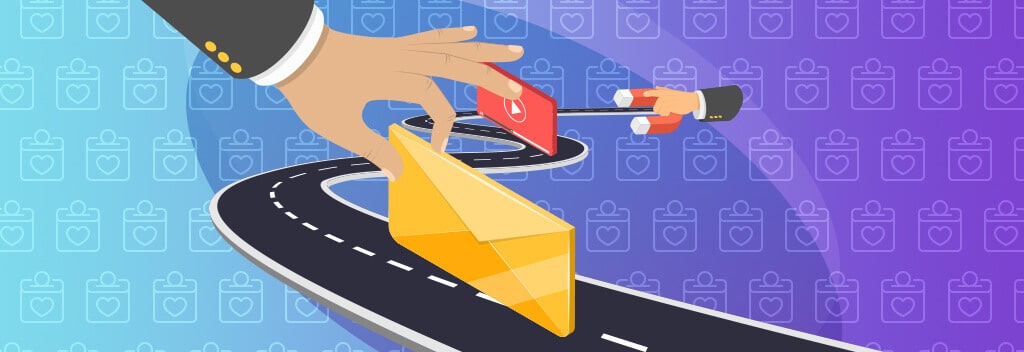If you’re in the B2B sales and marketing world, you are probably familiar with the three stages of the buyer’s journey: Awareness, Consideration, and Decision.
The B2B buyer’s journey often spans weeks or even months, and planning how to market to your audience during this time requires a solid B2B content strategy. You want to provide information that speaks to buyers at every stage of the journey.
Let’s review what types of content work best for each stage.
Awareness Stage
In this stage, your buyers are just starting to look for solutions to their challenges. They may or may not be seeking out vendors at this point, but they are likely doing research and gathering information about potential ways to go about solving their problem.
Prospects in the awareness stage are not ready to buy just yet. So you want to provide them with content that requires minimal commitment and is easy to digest, yet gives them a good introduction to your expertise.
Some examples of content may include:
- Blogs: Blogs about hot topics in your client’s industry or field establish credibility that you understand the market and its challenges, and help position you as a thought leader.
- Videos: Many users today prefer to watch videos to get a quick overview of your product or service. Videos can cover general info on your offering, a specific trend in the industry, or a product explainer. In this stage, your videos should be brief – around one to three minutes long.
- Infographics: Infographics provide visual representations of information that readers can scan quickly and understand without a ton of effort.
- Client testimonials: Client testimonials are another way to build credibility. Buyers like to see third-party validation from your clients that confirms you make good on your brand promise.
Consideration Stage
In the consideration stage, buyers are more seriously considering a product or service to help them with their challenges. They’re doing a deeper dive into your B2B website – and your competitor websites – to see who can best fulfill their needs.
This is the time to demonstrate the benefits of your offering. You’ll want to get into more detail about how your product or service works and how it can help your prospective client.
Buyers who are considering their options will be attracted to:
- Case studies: These demonstrate how you’ve worked with clients in the past to solve their challenges and reveal positive results received after using your product or service.
- White papers and e-books: Longer content pieces like these should not include a sales pitch, but should cover a specific industry topic in-depth to showcase your thought leadership. This type of content helps build trust and assures the prospect you know your stuff.
- Video demos: This is the time to provide a video that demonstrates how your product works. These videos may be a little longer than overview videos, but we still recommend keeping them to 10 minutes or less.
- Webinars: Webinars are another opportunity to showcase your thought leadership and also give you a chance to collect your prospect’s information when they sign up. Your sales team should follow up on these leads, as they are actively seeking information.
Learn more: How to effectively manage and convert inbound leads.
Decision Stage
Now, it’s go time. Buyers are seriously thinking about enlisting the help of your company, but they may still be considering one or two of your competitors as well.
They are close to making a decision, so you’ll want to provide content that seals the deal.
- Live demos: Live demos are especially effective for software providers. Clients want to see firsthand how your product works, and a one-on-one demo with a member of your team helps to personalize the experience so you can cover the topics this prospect is really interested in.
- Free trials: If applicable, offer a free 2-week (or so) trial so your prospects can experience how the product fits into their day-to-day workflow.
- Spec sheets: At this point, prospects will want specific details about your product and may need to understand the technical specifications or measurements of your product.
- Free consultations: If your offering is service-based, free consultations or meetings with a team member can help answer questions they have and provide a more individualized explanation of how you can help.
Read more: 5 tips for asking clients for feedback or reviews.
Remember, B2B buyers must conduct thorough due diligence when making a purchase for their business. It’s important to keep them engaged at all stages with the right B2B content so when the time comes to buy, they have all the information they need to make a solid decision.



